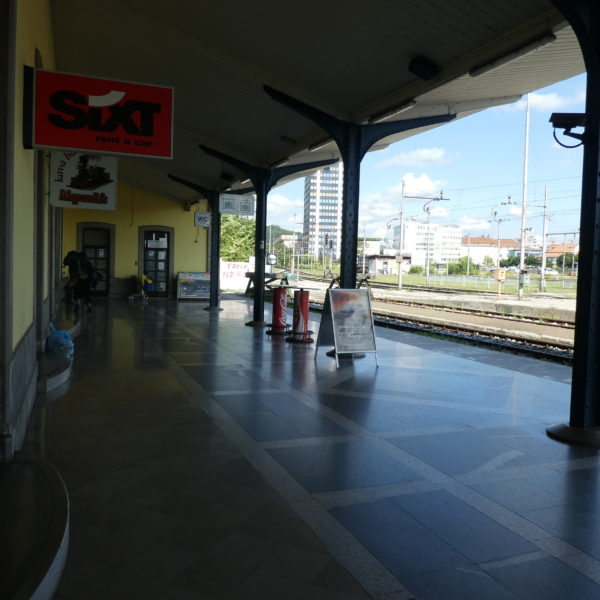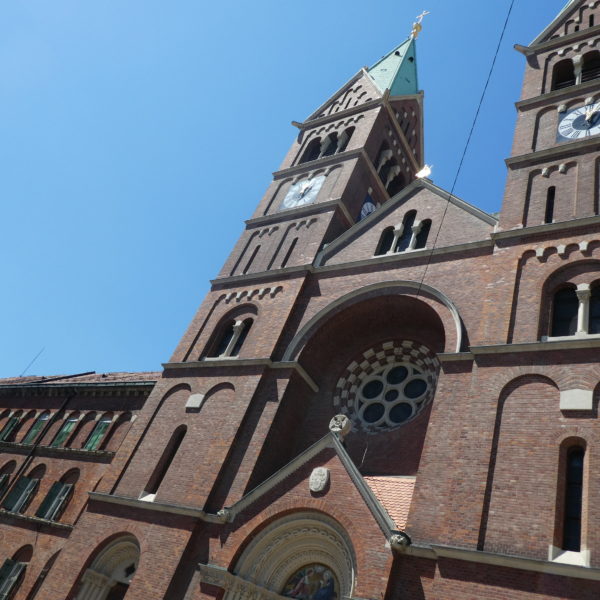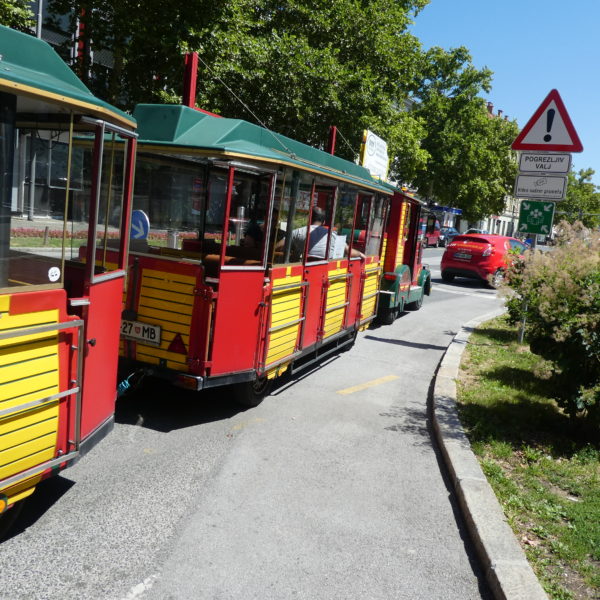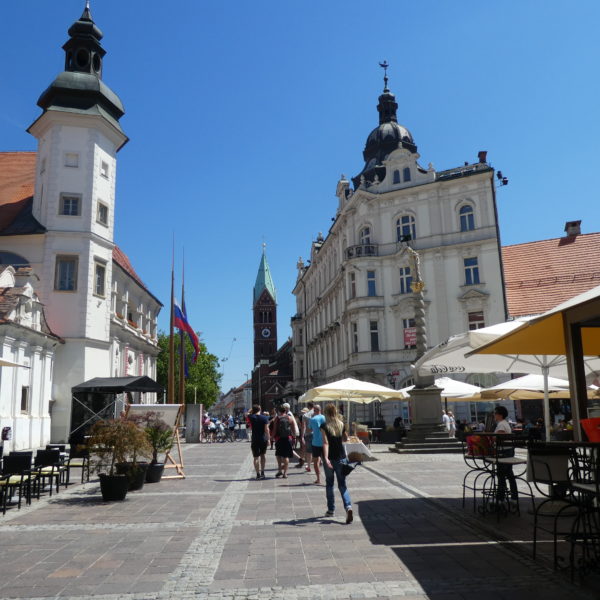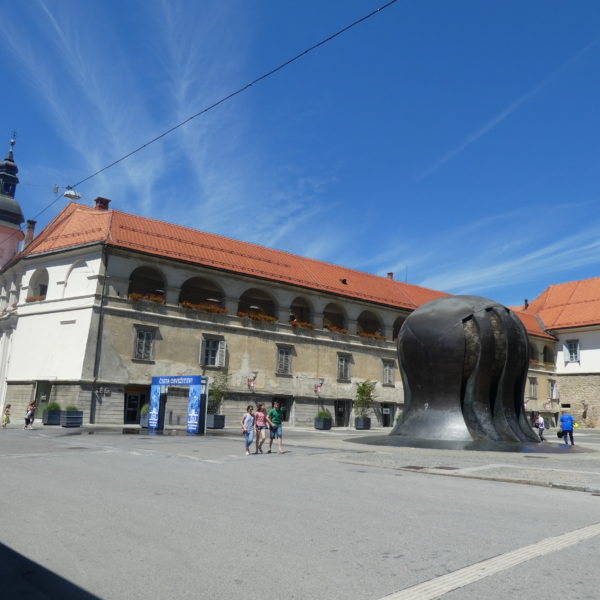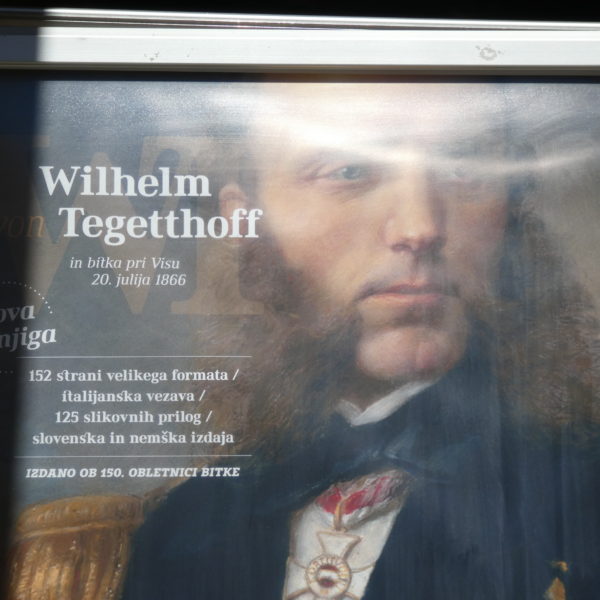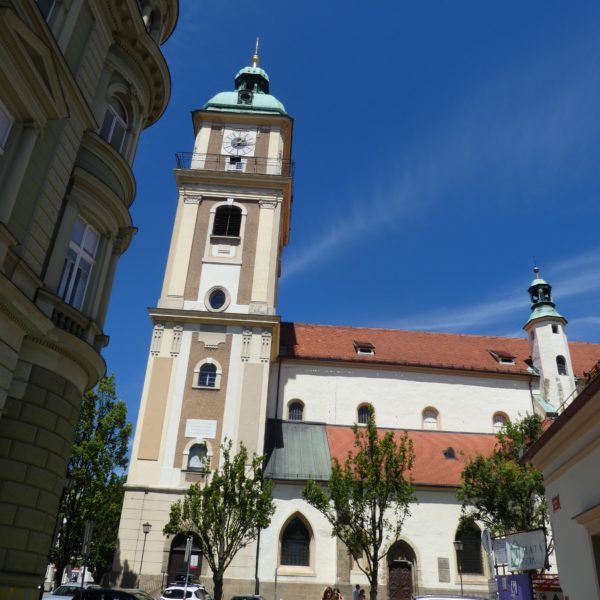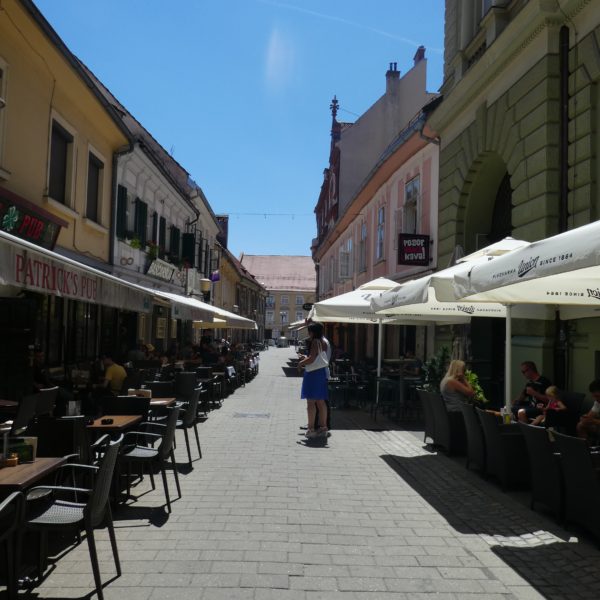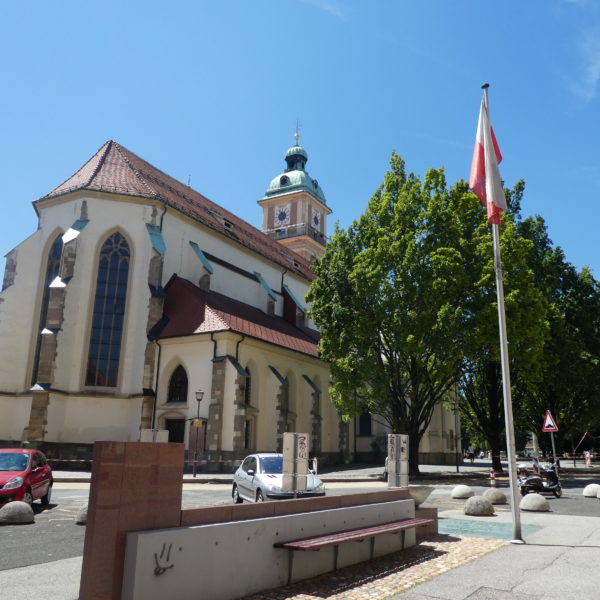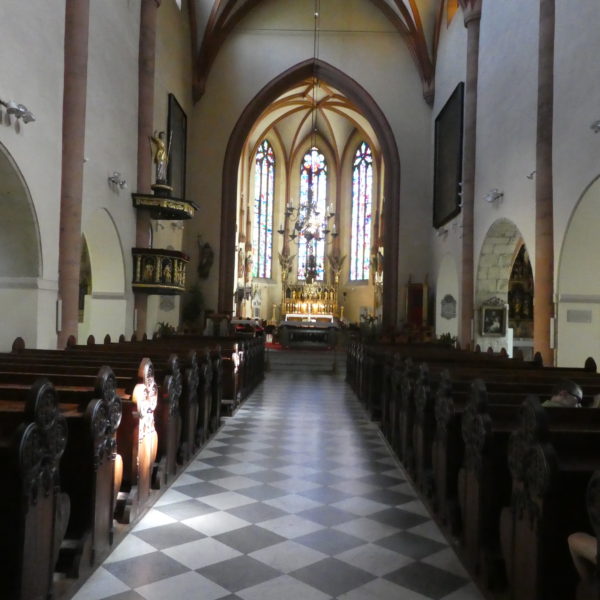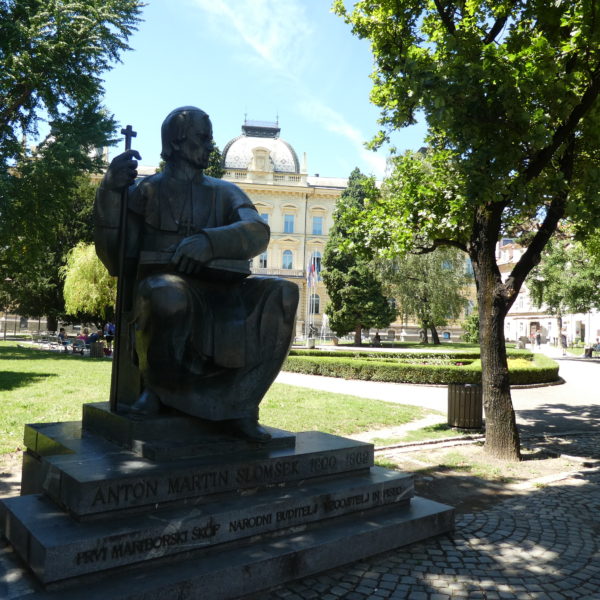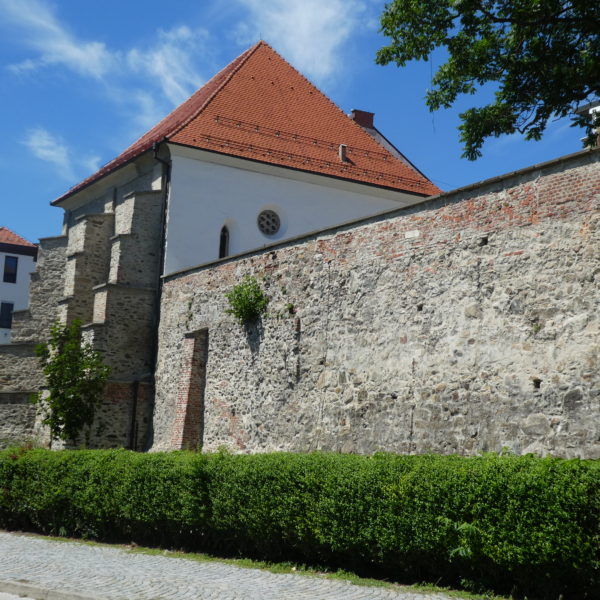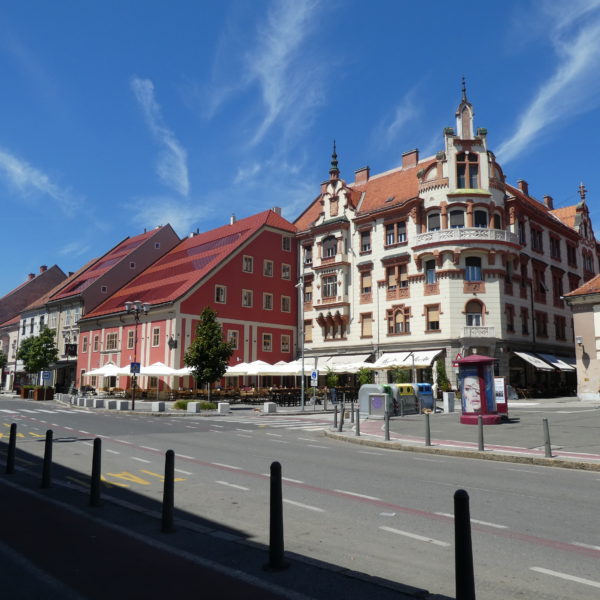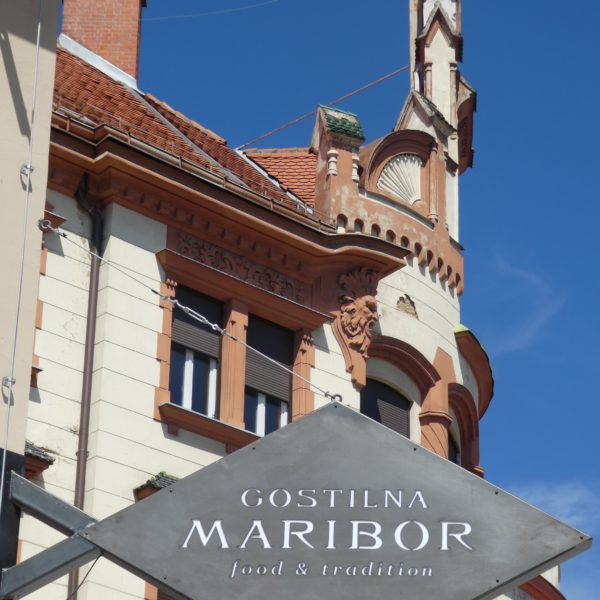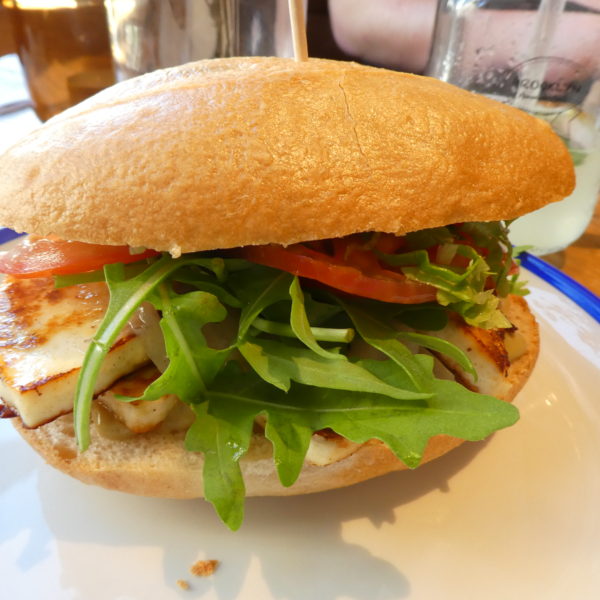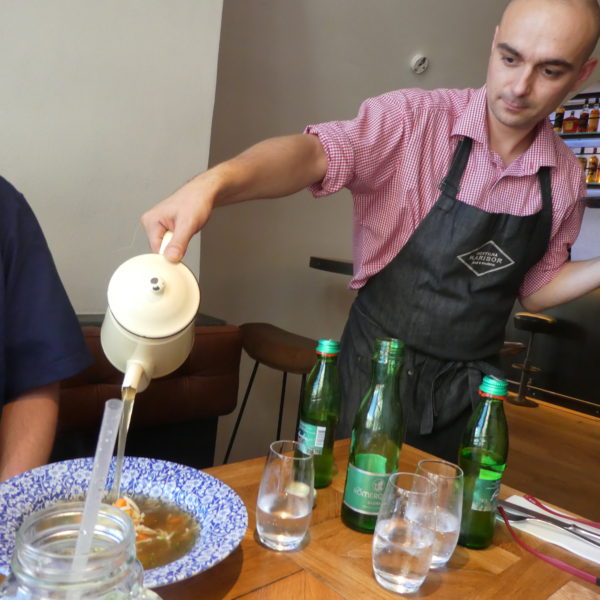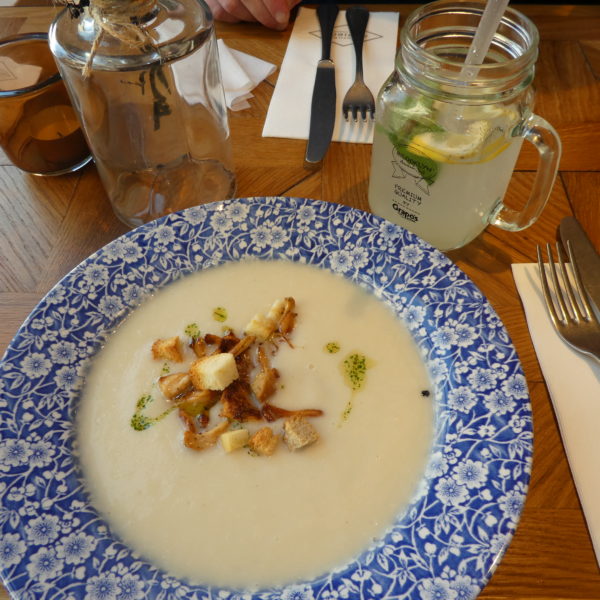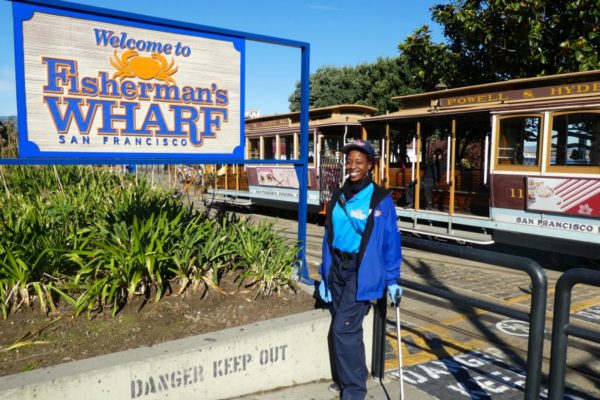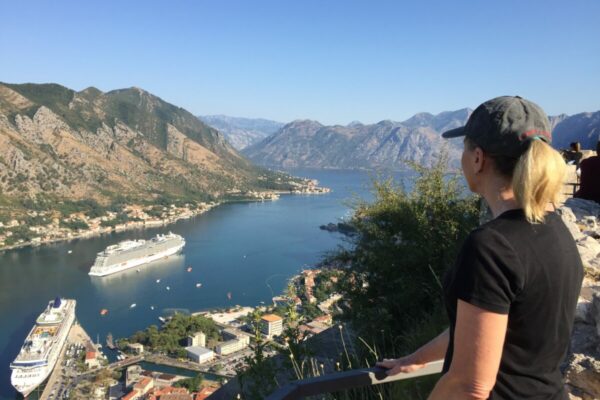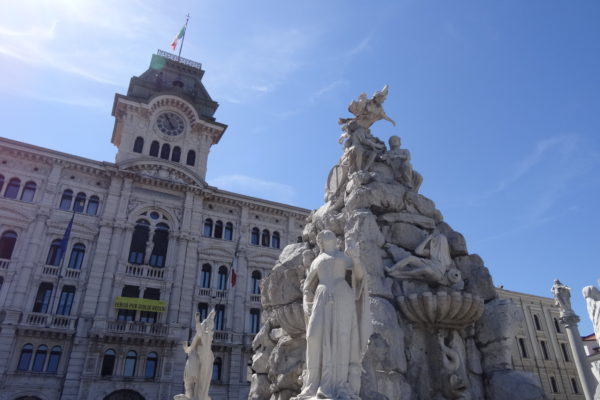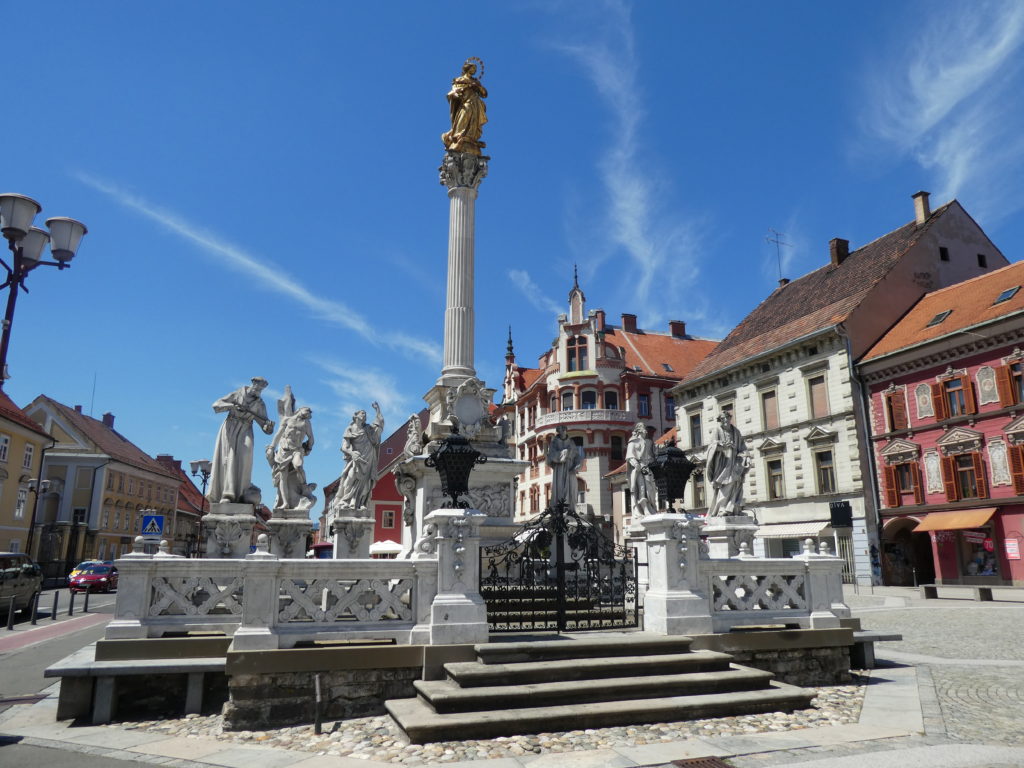

You can have a first-class day in Slovenia’s second largest city. It deserves more respect from travelers — and a visit.
You could compare three Slovenian cities to three sisters. The first, Ljubljana, was smart and sexy. The second sister, Bled, was unbelievably pretty. The third sister, Maribor, wasn’t so stunning at first glance. But she quietly grows on you. And then you can’t ever forget her or her fascinating history. Here’s how to visit the city of Maribor and nearby Pohorje mountain on a Day Trip from Ljubljana.
Rent a Car
Slovenians will be quick to admit their bus and train transport could use a little improvement. But that’s no problem because renting a car and driving on the well-paved and well-marked highways is easy! Our friends at I Feel Slovenia recommended Sixt Rent a Car. After making an online reservation go to the counter, just off the tracks at Ljubljana’s train station. If you like to save money by planning ahead, reserve a car with Auto Europe.
Do the paperwork and then walk outside the front of the terminal. Turn right past a corrugated fence to reach the secure parking lot and insert your pre-programmed card into the gate to get out. Our rental was a Czech-made Škoda Octavia, a peppy and roomy station wagon. A great car, despite the fact that “škoda” means something like “What a shame!” in most Slavic languages.
Meet a Storyteller
It took us about 90 minutes to drive from Ljubljana to Maribor. Arriving mid-morning, we followed the GPS to the Maribor-Pohorje tourist info point in the center of town. Most parking just outside the pedestrians-only center was free on weekends!
On Fridays at 4 pm and Saturdays at 11 am from June through October, professionally guided tours are offered for just 5 euros per person. Kids under 7 are free. You might wish to take advantage of a tourist train ride around town if you have very small kids or limited mobility due to the steep hillside slope down to the riverbank. There’s also a free app if you’d rather spend about two hours wandering on your own.
We explored the pretty Franciscan church while waiting to meet the tour guide who started our love affair with Maribor. Blanka Prezelj slyly admits that her married name means “breadcrumb.” But like a woman in a fairytale, she paved our walk with tasty morsels of information about the streets and the buildings. She grew up here and knows all the stories and the history. She speaks both English and German quite well, and encouraged us to practice our beginner Slovene with her.
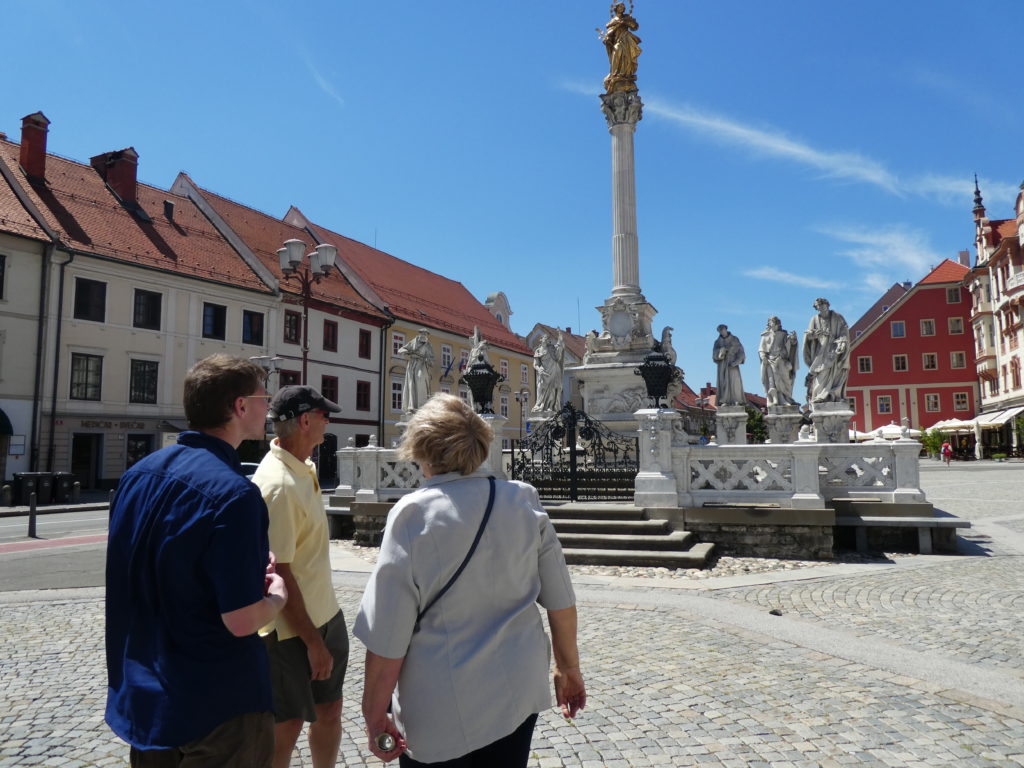
Tour guide Blanka tells a story about the plague survivors.
On the one of the city’s large squares she pointed out Maribor Castle, now a regional museum, built in 1478 to protect the city from the invading Turks. Maribor’s finest won the battle, she says, because “the strategy was good, the men were brave and the wine was strong.” Next door is a monument to the partisans who fought in World War II. Nearby she pointed out a cafe that was the “Donkey Corner” where lovesick boys from a nearby school in the 1950s pined over the schoolgirls they hoped to marry. To this day, the “donkeys” have an annual reunion here to listen to the oldies while twirling their wives on the dance floor. Farther down the street, she pointed out the birthplace of an Austrian admiral famous for his unusual split beard. Please, don’t let this become a trend.
Art and Architecture
The great Slovene architect Jože Plečnik put his stamp in Maribor, designing the oval around Slomškov square with a harmonious planting of oak trees to link communication (post office), the arts (theater), education (university) and religion. At its center stands the Cathedral of St. John the Baptist, a once-small medieval church that was enlarged with both romanesque and gothic arches as the centuries went on. Maribor’s merchants prospered due to their position on the trade route from Trieste, Italy to Vienna and they left their mark with a splendid chandelier representing the various guilds.
Outside, Bishop Slomškov holds a place of honor; he promoted the Slovene language for worship services at a time when this area was ruled by a German-speaking Austrian elite. The church’s bell tower provided a vantage point for the fire watch. The job was always assigned to a woman, Blanka said, because a male fire guard would be too easily distracted by the busy beer street below.
For better and for worse, the Styria region of Slovenia has been influenced by its proximity to Habsburg Austria and Nazi Germany. During World War II, Hitler himself visited. Maribor was a center for manufacturing Nazi aircraft engines and parts. As a result, the city and its strategic bridges over the Drava River were heavily bombed, but have been rebuilt or restored.
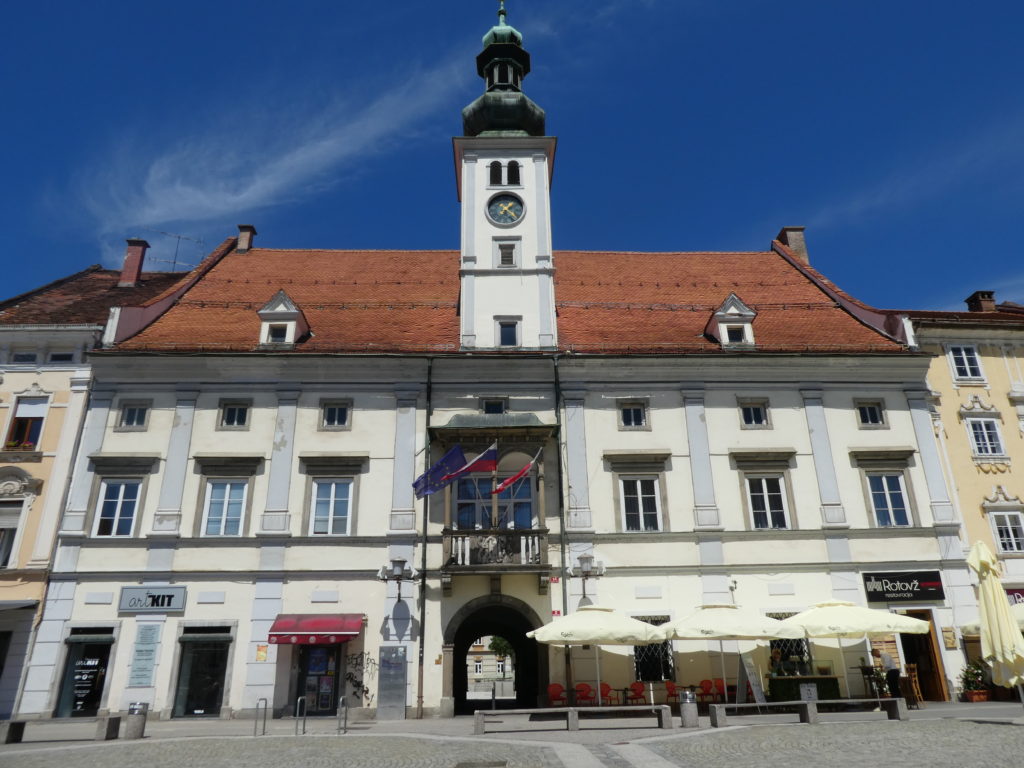
There’s something a little “off” about the city hall clock tower because the builder didn’t get paid.
The main square, Rotovški Trg, held more stories. Notice the city hall clock tower is a bit off center, due to a builder who was pissed off at not being paid on time. The baroque plague monument was erected by grateful survivors — including a baker’s family that dispensed bread on long poles and ropes, and washed off the customers’ coins with vinegar to remain germ-free.
Another revelation is the recent restoration of a synagogue that was the center of a thriving Jewish community here from the 13th century until the Holocaust of World War II. The building survived the Nazis because it was covered over by a military installation and later by an apartment block that was built around it. If you have extra time, wander the baroque streets of the Lent quarter, named because it bordered the river where boats would be leaned up against the banks.
A few of the baroque buildings may seem a little shabby, next to some art nouveau stunners and the award-winning restoration of the Hotel Maribor. It’s a Fixer Upper Joanna Gaines would be proud of. If you’d like to splurge on a longer stay in Maribor, there are 13 stunning apartments with balconies ingeniously concealed while preserving the historic roofline of the 18th century building. And guys, check out the unusual urinals in the men’s room.
Try the House Bun and the Soup
The hotel’s Gostilna Maribor offers a lunch menu centered on the traditional House Bun of the region, called “zemljica.” It’s a delight for beef and pork lovers, but there’s also a yummy vegetarian version. House Buns sustained traveling knights and merchants alike, back in the day when every local pub and roadhouse had its own version.
Soups also play a key role in Slovene cuisine — we tried a zesty cauliflower soup, and an unusual presentation of veggies and noodles, freshly cooked to perfection with the beef broth poured on as it is served. “Soup and sandwich” will never be the same. We needed more time for this savory meal, but we were in a hurry to pay our respects to a 400-year old grapevine and then take the underground wine tour, which I’ll cover in another post.
Head for the Hills
Blanka warned us not to be fooled by the sleepy summer atmosphere in Maribor. It’s a university town that fills up with more than 30,000 college and high school students during the academic year. Annual film, dance and music festivals also draw crowds.
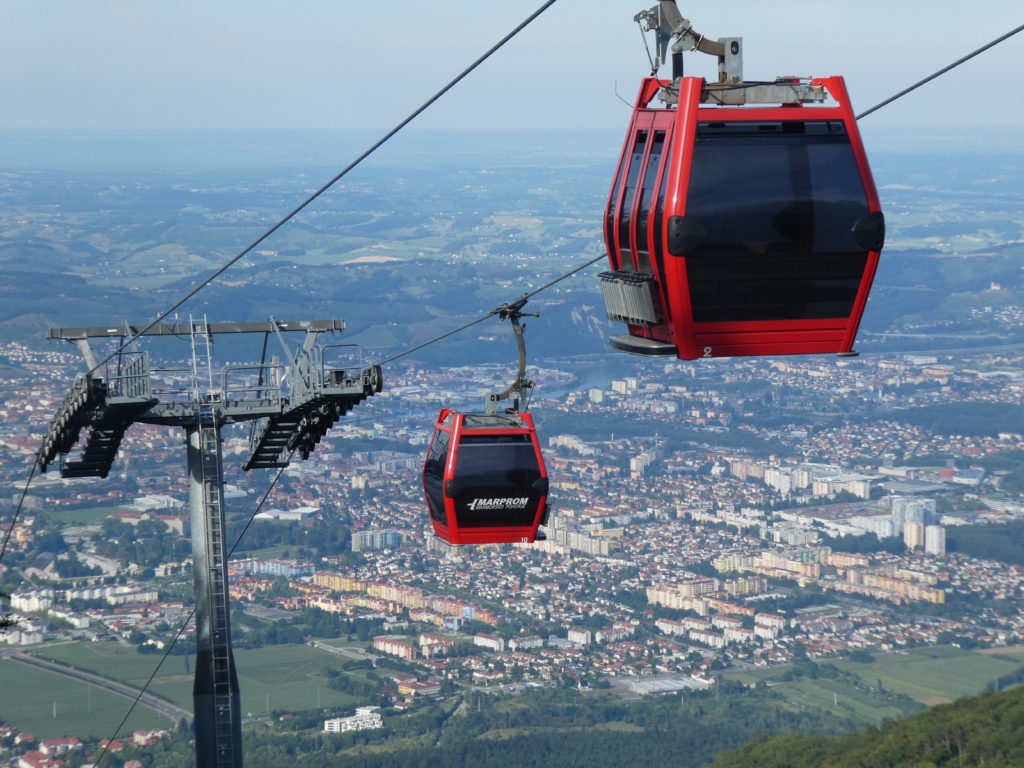
Stunning views from the cable car in the home town of world class skiers.
Only 4 miles away is the gateway to the skiing center of Pohorje. The cable car to the top of the mountain for 6 euros is an excellent way to beat the summer heat while enjoying views of Maribor below. World class skiers and mountain bikers call it home. It’s popular for winter sports from December to March. We headed back to Ljubljana, wishing we had a little more time to spend in this charming region. I scooped up an armload of brochures in the tourist info center with ideas for future trips to the area — everything from a hotel where you can observe bears in the wild to a wine road lined with respected vintners.
Terry’s Travel Tips
The Maribor-Pohorje Tourist Board has a helpful website for planning your trip at any time of year. The tourist information point is on Partizanska Cesta — a street named for local resistance fighters. Reservations for the guided tours are recommended.
Maribor is built on a steep slope down to the river and can be challenging for people with limited mobility. However, it won’t challenge your budget. We found most prices to be a good value! For more great day trips from Ljubljana, see my posts on Piran, the Škocjan Cave and Celje Castle.
The Slovenian Tourist Authority and the Maribor-Pohorje Tourist Board partnered with us for the writing of this post. Many thanks! The article reflects the typical experience any visitor can expect. Research and opinions are my own.
Want more stories like this? Like @strangersinthelivingroom on Facebook, and sign up for the occasional email when there is a new post.

Maribor’s huge student population makes some noise, but not in summer.

